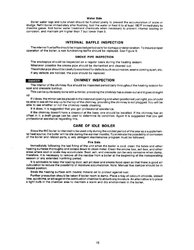Tried this over to NEPA, didn't make much headway. Got recommendations to use stuff similar to WD-40 and the like.
Original question was regarding New Yorker's WC90 owners manual...
says... well, look at it yourself.
"Neutral mineral oil."
I know of mineral oil from the pharmacy that makes you poop. I know of mineral oil that goes in transmissions, hydraulic clutches, and rear ends, as well as steam engines... never heard of "neutral" mineral oil...
Recommendations?
I am going to clean it good, and then coat it with something. Haven't figured out what yet.
Thinking WD-40 like stuff has a flash point that is a bit lower than any "mineral oil". No "BOOMS" allowed unless it's coal gas doing it.
Thanks,
Leon
Original question was regarding New Yorker's WC90 owners manual...
says... well, look at it yourself.
"Neutral mineral oil."
I know of mineral oil from the pharmacy that makes you poop. I know of mineral oil that goes in transmissions, hydraulic clutches, and rear ends, as well as steam engines... never heard of "neutral" mineral oil...
Recommendations?
I am going to clean it good, and then coat it with something. Haven't figured out what yet.
Thinking WD-40 like stuff has a flash point that is a bit lower than any "mineral oil". No "BOOMS" allowed unless it's coal gas doing it.

Thanks,
Leon


